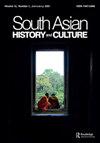A Study on the Spatial Structure and Its Cultural Factors in Pingyao, China
IF 0.3
0 ASIAN STUDIES
引用次数: 0
Abstract
Because of the rapid development of heritage tourism, heritage conservation is receiving increasing national and international attention, albeit most of it is concerned with personal structures rather than space conservation. The first step in conserving the heritage, especially in a historic city’s environment, is to identify the social and cultural factors that have generated the changes. The Ancient City of Pingyao in China comprehensively reflects the traditional city planning of the Han people throughout the Ming and Qing Dynasties. Furthermore, in the second half of the 19th century, as the center of banking in China, Shanxi merchants in Pingyao had a profound effect on the modern economic development of the country. Meanwhile, the spatial has been affected by the commercials. In this article, to clarify the associativity between cultural factors and spatial structure, researchers studied the development of Shanxi merchants and the modification of Pingyao’s spatial structure with the analysis of profundity logic and social factors. By analyzing the data from ArcGIS, this paper found that cultural heritage is a living entity, the result of the change, a dynamic pattern, and an evolving inter-relationship between history and culture, which allows cultural heritage to present a unique characteristic. Accordingly, for sustainable heritage tourism, the authors argue that it is necessary to refer to the traditional cultural factors and sociocultural requirements that influenced the spatial shape and consequently propose planning measures for improvement rather than simply studying the spatial structure.平遥城市空间结构及其文化因素研究
由于遗产旅游业的迅速发展,遗产保护受到越来越多的国家和国际的关注,尽管大多数是关于个人结构而不是空间保护。保护遗产的第一步,特别是在历史城市的环境中,是确定产生变化的社会和文化因素。中国平遥古城全面反映了整个明清时期汉人的传统城市规划。此外,在19世纪下半叶,平遥的山西商人作为中国的金融中心,对近代中国的经济发展产生了深远的影响。同时,空间也受到了商业广告的影响。为了阐明文化因素与空间结构之间的关联性,研究者从深层逻辑和社会因素的分析出发,对山西商人的发展和平遥空间结构的变迁进行了研究。本文通过对ArcGIS数据的分析发现,文化遗产是一个有生命的实体,是变化的结果,是一种动态的格局,是历史与文化之间不断演变的相互关系,这使得文化遗产呈现出独特的特征。因此,对于可持续的遗产旅游,作者认为有必要参考影响空间形态的传统文化因素和社会文化要求,从而提出改进的规划措施,而不是简单地研究空间结构。
本文章由计算机程序翻译,如有差异,请以英文原文为准。
求助全文
约1分钟内获得全文
求助全文

 求助内容:
求助内容: 应助结果提醒方式:
应助结果提醒方式:


